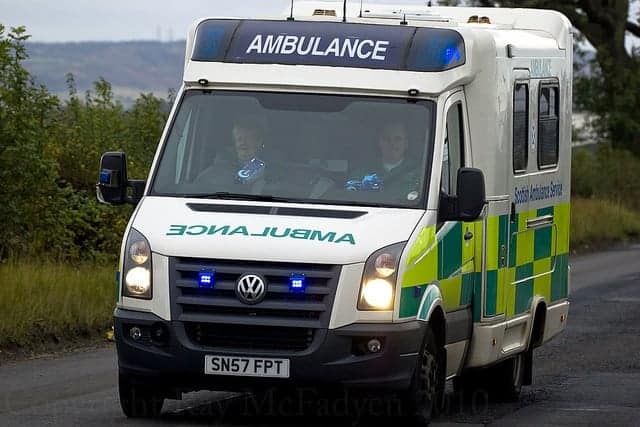
Downgrading of Scottish ambulance response times is suspended
A downgrading of ambulance response times to calls reporting falls and chest pains has been suspended by the Scottish government.
Scottish Ambulance Service management proposed that 12 kinds of call-outs would be changed from a “red” to a “yellow” response.
It meant crews would be required to attend within 19 minutes, rather than eight minutes.
Critics claimed response times were increased to meet government targets.
The ambulance service said the changes were based on “detailed clinical analysis of cases for which those codes have been applied, as well as feedback from staff in clinical practice”.
Current targets are for 75% of the most serious calls to be responded to within eight minutes, but a report last week found that only 66% of calls are seen within that time.
ambulance
The proposed changes to response categories came to light in a document published in the Daily Record.
It detailed 12 changes including the response to someone “not alert after falling” downgraded from red to yellow and calls reporting someone “not alert with chest pains” or “difficulty speaking between breaths” treated as an amber rather than red response.
The Scottish government said the proposed changes had been “paused” as Chief Medical Officer Dr Catherine Calderwood had “expressed concern”.
A government spokeswoman said: “We have been alerted to the Scottish Ambulance Service’s decision to change the classification of certain calls.
“The Chief Medical Officer has expressed concern regarding the clinical implications of this change of coding. As a result, the proposed changes to the coding have been paused by the ambulance service.
“They are reverting to their previous coding system while the Chief Medical Officer works with the team to understand the changes. This will help to ensure patient safety is maintained at all times.”
A Scottish Ambulance Service spokesman said: “The changes to 12 clinical codes, out of over 1,700 codes, were introduced to enable the fastest response to critical and immediately life-threatening conditions, such as cardiac arrest.
“The plans are based upon detailed clinical analysis of cases for which those codes have been applied, as well as feedback from staff in clinical practice and trade union partners have been fully engaged in the process.
“We have paused these plans to allow more time to review them with the Chief Medical Officer.”

You must be logged in to post a comment.